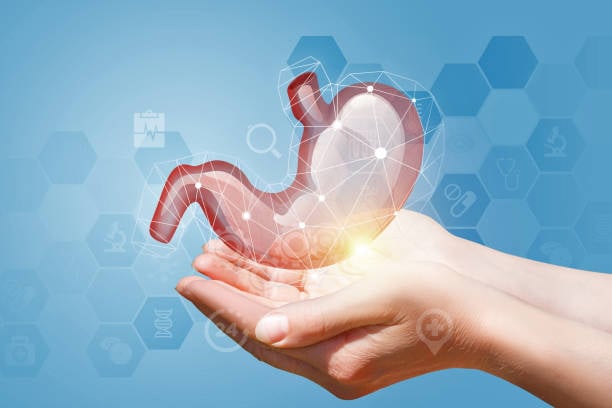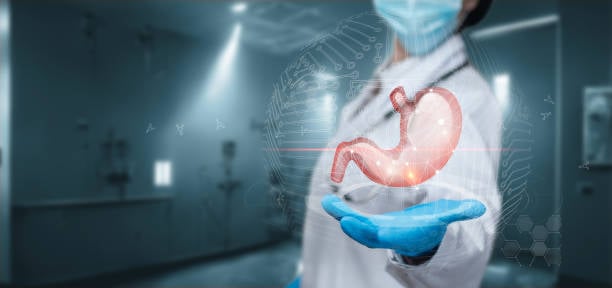Endoscopic Intragastric is a minimally invasive procedure gaining traction in the realm of weight management and gastrointestinal health. This blog will demystify the procedure, explaining its purpose, benefits, the procedure itself, recovery, and potential risks, ensuring you have a comprehensive understanding of this innovative approach.
What is Endoscopic Intragastric?
Endoscopic Intragastric involves placing a device within the stomach through an endoscope. This procedure is primarily used for weight loss, helping patients manage obesity when traditional methods such as diet and exercise are ineffective. The endoscope allows for visual inspection and intervention without large incisions, making it a less invasive option compared to traditional surgeries.\

Purpose of Endoscopic Intragastric
The main purpose of the Endoscopic Intragastric procedure is to aid in weight loss. It provides an option for those who may not qualify for surgical interventions or are seeking an alternative method. This procedure can help patients achieve their weight loss goals more effectively and sustainably, contributing to improved overall health.
How Does the Procedure Work?
Understanding how Endoscopic Intragastric works is crucial for anyone considering it. The procedure generally follows these steps:
- Preparation: Before the procedure, patients typically undergo assessments to determine their suitability. This may include medical history evaluations, physical exams, and dietary consultations.
- Sedation: Patients are usually sedated to ensure comfort during the procedure. This can be achieved through conscious sedation or general anesthesia, depending on the specific case and patient preferences.
- Insertion of the Endoscope: The endoscope, a flexible tube with a camera and light, is inserted through the mouth and into the stomach. This allows the medical professional to visualize the stomach lining and assess its condition.
- Placement of the Device: Once the endoscope is in place, a device, often a balloon or a sleeve, is introduced into the stomach. This device takes up space, helping patients feel full with smaller amounts of food.
- Monitoring: Throughout the procedure, patients’ vital signs are closely monitored to ensure safety and effectiveness.
Types of Devices Used
There are various devices used during the Endoscopic Intragastric procedure, with two of the most common being:
- Intragastric Balloons: These are silicone balloons that are inflated with saline. They occupy space in the stomach, which helps to reduce hunger and promote early satiety.
- Gastric Sleeve: In this approach, a portion of the stomach is stapled and removed, creating a sleeve-like structure. This permanently reduces the stomach's capacity.
Benefits of Endoscopic Intragastric
The Endoscopic Intragastric procedure comes with numerous benefits:
Minimal Invasiveness
Unlike traditional surgeries that require significant incisions, the Endoscopic Intragastric procedure is performed through the mouth, resulting in minimal pain, a shorter recovery time, and less scarring.
Short Recovery Time
Patients often experience a quicker recovery, allowing them to return to their daily activities faster than with more invasive surgical options. Many individuals can resume normal routines within a few days.
Adjustable and Reversible Options
Many devices used in Endoscopic Intragastric can be adjusted or removed. This provides patients with flexibility and the option to revert to their original state if necessary.
Improved Quality of Life
For many patients, achieving weight loss leads to enhanced physical health, increased mobility, and improved mental well-being. The procedure can lead to reduced risks of obesity-related diseases such as diabetes, hypertension, and sleep apnea.
Who is a Good Candidate for Endoscopic Intragastric?
Not everyone is a suitable candidate for Endoscopic Intragastric. Ideal candidates typically include:
- Individuals with a Body Mass Index (BMI) of 30 or higher.
- Those who have tried and failed to lose weight through diet and exercise.
- Patients who do not qualify for traditional surgical weight loss options.
Pre-Procedure Considerations
Before undergoing the Endoscopic Intragastric procedure, patients should engage in discussions about their medical history, weight loss goals, and lifestyle. This collaborative approach ensures that the procedure aligns with the patient's overall health objectives.
The Procedure: Step-by-Step Breakdown
Preparation and Consultation
Prior to the Endoscopic Intragastric procedure, patients will have a detailed consultation. This may involve blood tests, imaging studies, and a review of medical history to assess eligibility.
Undergoing the Procedure
Patients will be given sedation to ensure comfort. The entire procedure typically lasts between 30 to 60 minutes. Following the device placement, patients will be monitored for any immediate complications before being moved to a recovery area.
Post-Procedure Monitoring
After the Endoscopic Intragastric procedure, patients will remain in a recovery area until they are stable. They will be monitored for signs of complications, and once cleared, they can go home, often on the same day.
Recovery After Endoscopic Intragastric
Initial Recovery Phase
The first few days following the Endoscopic Intragastric procedure are crucial. Patients may experience mild discomfort, which can be managed with prescribed medications. A liquid diet is typically recommended during this phase.
Gradual Introduction of Foods
As recovery progresses, patients will gradually reintroduce solid foods. It's essential to follow dietary guidelines provided by healthcare professionals to ensure optimal results.
Importance of Follow-Up Care
Regular follow-up appointments are essential to monitor progress and make any necessary adjustments. These appointments can help address concerns, assess weight loss, and provide ongoing support.
Potential Risks and Complications
While Endoscopic Intragastric is generally safe, like any medical procedure, it does come with risks. Possible complications may include:
Infection
Infections can occur at the insertion site or within the stomach. Proper hygiene and care during recovery can help minimize this risk.
Device-related Complications
There is a possibility of device migration or perforation of the stomach lining. Understanding the signs of these complications and communicating promptly with a healthcare provider is crucial.
Nutritional Deficiencies
Patients may experience nutritional deficiencies if dietary recommendations are not followed. Regular monitoring and nutritional counseling can help mitigate this risk.
Long-Term Success with Endoscopic Intragastric
Lifestyle Changes
Achieving long-term success following an Endoscopic Intragastric procedure requires commitment to lifestyle changes. Patients should adopt healthy eating habits, engage in regular physical activity, and prioritize mental well-being.
Support Systems
Building a support system can significantly impact a patient's journey. This may include joining support groups, participating in counseling, or engaging with family and friends.
Setting Realistic Goals
Setting achievable weight loss and health goals can help maintain motivation. Tracking progress and celebrating milestones can contribute to a positive mindset.
Conclusion
Endoscopic Intragastric offers a promising solution for individuals struggling with weight management. By understanding the procedure, its benefits, and the necessary lifestyle changes, patients can embark on a transformative journey toward improved health and well-being. As with any medical decision, thorough research, and consultation are key to ensuring that this innovative approach aligns with personal health objectives and aspirations. With the right preparation and commitment, Endoscopic Intragastric can be a powerful tool in achieving a healthier, happier life.

